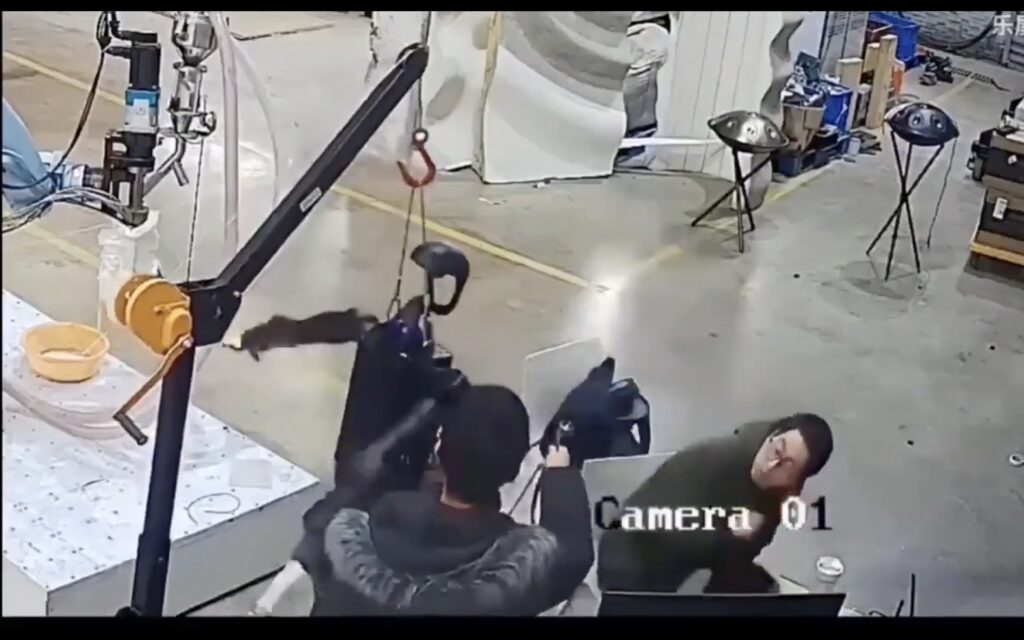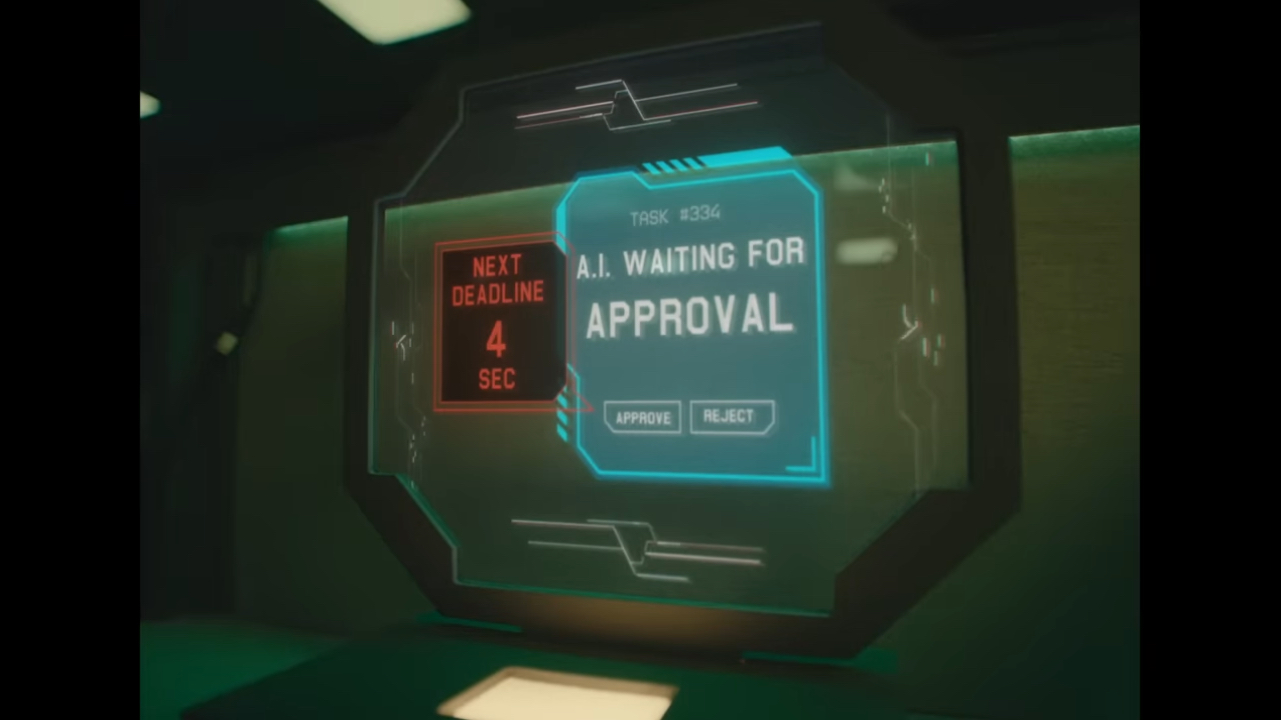This is an awesome us of DNS Standards. For the inclined tech and internet standard nerd.
Category: Technology, Web & Cloud
The author has a background in computer science and a passion for new technology. When the degree was earned, the web was not too popular yet. That opened an opportunity to follow the entire process with huge fascination, and the journey didn’t end yet. Most of the development happens in Python and Django these days, but all other facets are interesting, too.
-
Robot Uprising

Robot Uprising Die Roboter haben auch keinen Bock mehr auf das alles und fangen langsam an, Menschen zu verprügeln. In dem Fall Unitree H1, der beinahe zwei Arbeiter verletzt hätte.
-
Decoding e-Sports
We spoke to Sandra Bloy today, President of the Bavarian e-Sports Association. After we spoke to Christoph Spanagel about Agentic AI past week, basically to bridge the gap in our plan to discuss sports, we returned back on track with this episode. With Sandra, we discussed the growth and development of e-sports, and how popular games like League of Legends and Fortnite are. The conversation covers quite a bit of history of e-sports, training regimens, the role of LAN parties, and large tournaments.
We’ve touched topics like inclusivity, gender diversity in teams, and the importance of health and nutrition. Later we highlight this new e-sports venue in Munich, the SAP Garden, the association’s events, and the role of online platforms like Twitch and Discord. As always, we’ve ended our conversation with something forward looking. And after we learned that e-sports became Olympics,we’re looking forward not only to next years Olympic games, but also the upcoming E-Sports World Cup.
Watch the episode here:
-
Tech Bro Innovation

Patrick Boyle in “Tech Bros Inventing Things That Already Exist” Zum Jahresende ist an sich immer eine gute Zeit, sich über das kommende Jahr Gedanken zu machen. Und nicht nur das, auch zurückblicken ist auch immer eine gute Idee, damit man die gleichen Fehler im neuen Jahr nicht wiederholt.
Da ich ja nun in Tech arbeite, habe ich Tech-Jahresrückblicke geschaut. Und ich bin bei diesem Video von Patrick Boyle hängengeblieben. Wegen dem Titel, “Tech Bros inveting things that already exist”.
Patrick ist zwar im Finanzsektor beheimatet, aber er fasst ein Phänomen hervorragend zusammen, das ich bisher im wesentlichen nur als Bauchgefühl mit mir herumgetragen habe: dass viel Quatsch erfunden wird, der bei Lichte betrachtet schon existiert. Eine Saftpresse, Trinkflaschen für die es Apps gibt, solchen Dinge. Ich bin ja selbst nicht unschuldig daran, dass es Smart Lighting gibt.
Gerade weil Innovation oft nicht gleich als “Disruptiv” zu erkennen ist, wird das Wort viel zu inflationär benutzt, noch bevor eine Innovation sich als solche bewiesen hat.
Und im Rückblick fällt dann auf, dass viel vermeintliche Innovation oft einfach nur eine schlechte Wiederholung ist. Tech macht halt nicht alles besser.
-

Cadbury 5 Star
Ob das echte Werbung ist ist mir leider ein bisschen unklar. Es ist offenbar der echte Youtube Kanal der indischen Vertretung des Schokoladenherstellers. Trotzdem. In dem Spot wird eine Sache bedient, die in einschlägigen Kreisen schon lange und intensiv diskutiert wird. Was macht AI mit Menschen und menschlicher Arbeitskraft. Und wenn das nun wirklich echte Werbung ist, dann trägt Cadburry solche Gedanken zu einer breiteren Wahrnehmung.
Ich habe jetzt jedenfalls Lust auf einen Cadbury 5 Star Schokoriegel, bitte.
-
AI rant
mataroa.blog is ranting about everything that is wrong with AI today. The article clusters into five major arguments: the believe in how LLMs will realise efficiencies, the need to remain competitive, previous successes, preparation for the future, and finally everybody else. All nicely summarised and on point.
-
NetBSD verbietet Code aus AI
Code generated by a large language model or similar technology, such as GitHub/Microsoft’s Copilot, OpenAI’s ChatGPT, or Facebook/Meta’s Code Llama, is presumed to be tainted code, and must not be committed without prior written approval by core.
Source: NetBSD Commit GuidelinesNach Gentoo hat NetBSD AI generierten Code verboten. Jedenfalls braucht es Core approval, sollte Code submitted werden, der als “tainted” eingestuft wird.
“Tainted”, also “verdorben”, ist Code, wenn er aus Quellen stammt, die nicht eindeutig zurückzuverfolgen sind. Im Umfeld von Software spielt das eine Rolle hinsichtlich Urheberschaft und Copyright. Bei NetBSD spielt Qualität auch eine Rolle für diese Entscheidung.
-
data breach in media culture.
May the fourth be with you. Bisschen spät, aber den wollte ich mir für Montag aufheben.

via pseudo nym.
-
KI kills search
Pulumi, ein Hersteller von Infrastructure as Code Sachen, sagt, dass sie schlechte KI generierte Beispiele aus dem Index haben werfen lassen müssen. Weil KI Sachen halluziniert hat, die irrführend und falsch sind.
Story bei The Register.
-

W3C Sustainability Guidelines
Mit Datum vom 11. April ist das alles noch recht neu. Aber ein weiteres Zeichen dafür, dass Green- bzw. Sustainable Computing an Aufmerksamkeit gewinnt. Jedenfalls hat die W3C Community Group einen Draft Report entwickelt, der eine Guideline für Web Development bieten soll.
Gegenüber dem Artikel aus dem W3C Blog, den ich neulich verlinkt habe, bespricht die Guideline nicht nur Web-Development und User-Experience Design. In dem Entwurf wird auch Produkt-Management berücksichtigt.
Der Entwurf ist hier: https://w3c.github.io/sustyweb